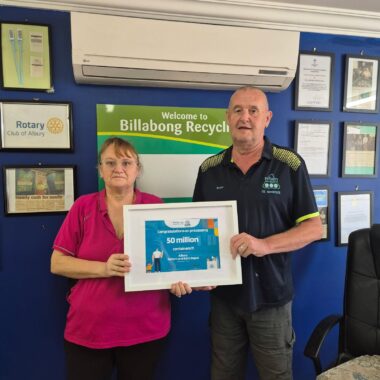The fires currently tearing through Los Angeles are a reminder that Australia can no longer rely on northern hemisphere nations for water-bombing aircraft and firefighters during our summer.
“During our Black Summer, more than 1,000 people came from North America to assist in firefighting efforts. Australia recently sent multiple teams to assist with the fires in North America. This sharing of resources, including aircraft, firefighters and specialists, is how we fight fires in the 21st century” said Friends of the Earth campaigns co-ordinator Cam Walker. “And the fact that fires are raging in mid winter in the USA highlights that the world has entered a new phase – the era of the pyrocene – and that our old ways of fighting fires needs to change.”
Normally Australia leases up to six Large Air Tankers (LATs) which are each allocated to a specific state or territory, but which are shared around the country according to greatest need. While we need up to 7 LATs in a bad fire season, we only own one (which is owned by the NSW Rural Fire Service) and we now lease one year round.
The other planes are leased in after their post season maintenance in the northern hemisphere. They all come from North America and arrive in the country during the traditional ‘shoulder’ season. This shoulder is rapidly disappearing as planes are needed for larger sections of the year in each hemisphere.
“As fire seasons extend in both hemispheres, we face the risk of being unable to secure leases for LATs in coming years”.
There is a clear link between the current fires around LA and climate change. For instance, a 2016 study found climate change enhanced the drying of organic matter and doubled the number of large fires between 1984 and 2015 in the western United States (source: NOAA).
After the Royal Commission into Natural Disaster Arrangements that was held to reflect on the lessons of the 2019-20 Black Summer fire season, the commission recommended (Rec 8.1) that the federal government create ‘an Australian-based and registered national aerial firefighting capability, to be tasked according to greatest national need”. In responding to the commission, the federal government decided not pursue the possibility of Australia establishing its own fleet of LATs.
The commission also noted that "extreme weather has already become more frequent and intense because of climate change (and that) further global warming over the next 20 to 30 years is inevitable”.
Mr Walker continued: “In light of all the available science about longer and more intense fire seasons in both hemispheres and the increased difficulty of securing LATs on lease from North America, the federal government must commit to establishing an Australian owned fleet of LATs before the 2025/26 budget”.
The current federal government has taken firefighting capacity seriously and provided significant funding for water-bombing aircraft. With a review of aerial firefighting capability currently underway (expected to report back later this year) now is the right time to acknowledge the reality that we are facing and commit to buying a sovereign fleet of LATs that will be permanently based in Australia.
In addition to buying a fleet of publicly owned LATs, Australia must:
- Stop contributing to even worse global heating, which will continue to lengthen fire seasons and other negative climate change impacts. In the first instance it must stop exporting vast volumes of fossil fuels
- Fast track the development of new technology that will ensure rapid detection of new start fires
- Investigate establishing a national remote area firefighting team which could be deployed as needed to assist state and territory firefighting efforts.
A national remote area firefighting team. As fire threatens World Heritage Areas and national parks across the country, it is time to establish a national remote area firefighting team, which would be funded by the federal government and tasked with supporting existing crews in the states and territories.
Long fire seasons stretch local resources, and sometimes remote areas such as national parks need to be abandoned in order to focus on defending human assets. Having an additional, mobile national team that could be deployed quickly to areas of greatest need would help us protect the wonderful legacy of national parks and World Heritage Areas across the country.
This was recommended by a Senate inquiry after the devastating fires in Tasmania of 2016.
Further comment
Cam Walker [email protected]
0419 338 047
Cam is campaigns co-ordinator with Friends of the Earth Australia and an active volunteer firefighter.

